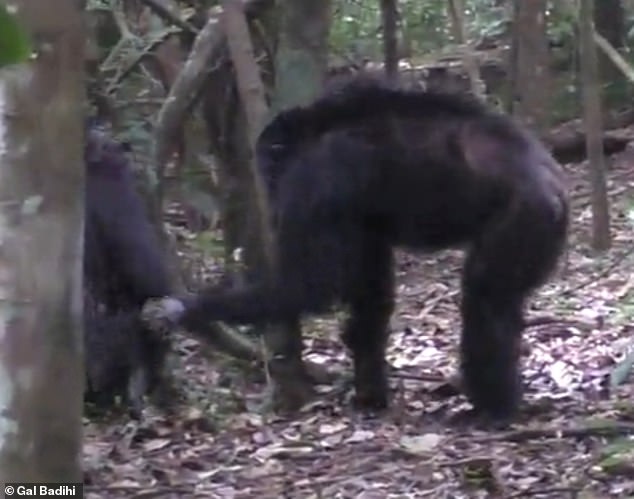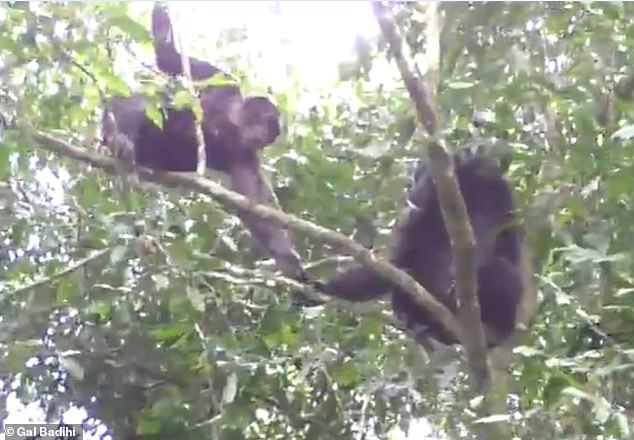From Vito Corleone in The Godfather to Sophia Loren in Yesterday, Today and Tomorrow, Italian characters are known for using exaggerated hand gestures.
Now it turns out that our closest living relative, the chimpanzee, does it too.
Researchers have discovered that primates gesture back and forth rapidly, much like in human conversations.
A team from the University of St Andrews in Scotland collected data on more than 8,500 gestures from 252 chimpanzees living in five wild communities in East Africa.
They measured the pace of turn-taking and conversational patterns between individuals who communicate through gestures rather than speech.
Whether it’s an important business meeting or a gathering of friends, humans can hold quick conversations with ease. Now it turns out that our closest living relatives, chimpanzees, can do it too.
The analysis revealed that most “conversations” involved a two-party exchange between two individuals, but some included as many as seven parties.
Examples include chimpanzees exchanging gestures after a conflict, where one would approach the other and the other would pat the other’s hand in response.
In another recorded interaction, chimpanzees exchanged reassuring gestures while traveling in a large group.
Individuals greeted each other with grunts, while others hugged and exchanged open-mouthed ‘kisses’.
“While human languages are incredibly diverse, one hallmark we all share is that our conversations are structured with quick turns of just 200 milliseconds on average,” said Professor Catherine Hobaiter, one of the study’s authors.

Examples include chimpanzees exchanging gestures after a conflict, with one reaching out to the other and receiving a pat on the hand in response.

In another recorded interaction, chimpanzees exchanged reassuring gestures while traveling in a large group.
“But the question was whether this was uniquely human or whether other animals share this structure.”
Overall, the chimpanzee data revealed timing similar to that of a human conversation, with brief pauses between a gesture and a response of about 120 milliseconds.
“We found that the timing of chimpanzee gestures and human conversational turn-taking is similar and very rapid, suggesting that similar evolutionary mechanisms drive these social and communicative interactions,” said first author Dr Gal Badihi.
‘We saw a little variation across different chimpanzee communities, which is consistent with what we see in people, where there are slight cultural variations in the pace of conversation – some cultures have slower or faster speakers.’

From Vito Corleone in The Godfather (pictured) to Sophia Loren in Yesterday, Today and Tomorrow, Italian characters are known for using exaggerated hand gestures.
The team said that among humans, Danes are the “slowest” speakers, while among eastern chimpanzees, the equivalent is the Sonso community in Uganda.
They added that their findings, published in the journal Current Biology, suggest that human communication may not be as unique as previously thought.
“This shows that other social species do not need language to engage in short-range communicative exchanges with a fast response time,” Dr Badihi said.
‘Human conversations may share an evolutionary history or trajectories similar to the communication system of other species, suggesting that this type of communication is not exclusive to humans but more widespread in social animals.’
In future studies, the team said they want to explore why chimpanzees have these conversations, and they believe chimpanzees often rely on gestures to ask each other for something.

